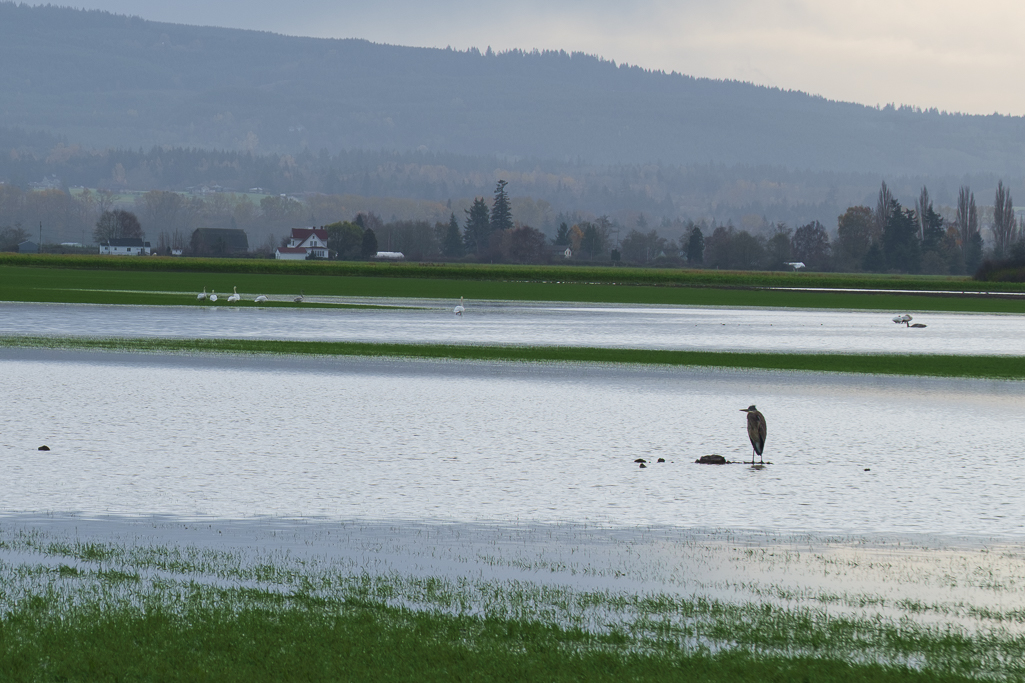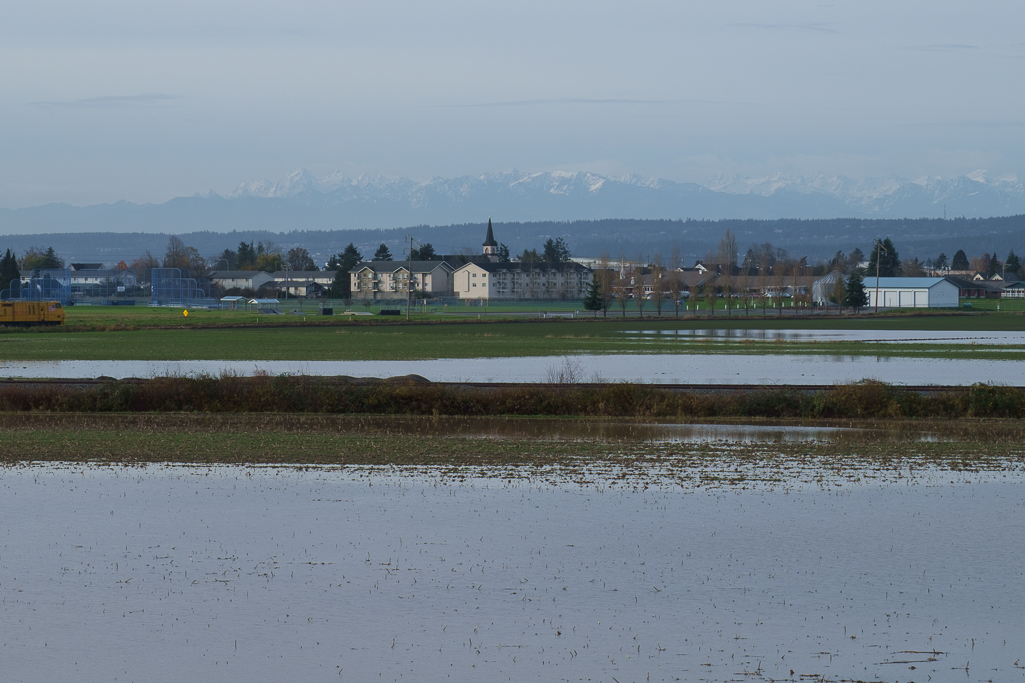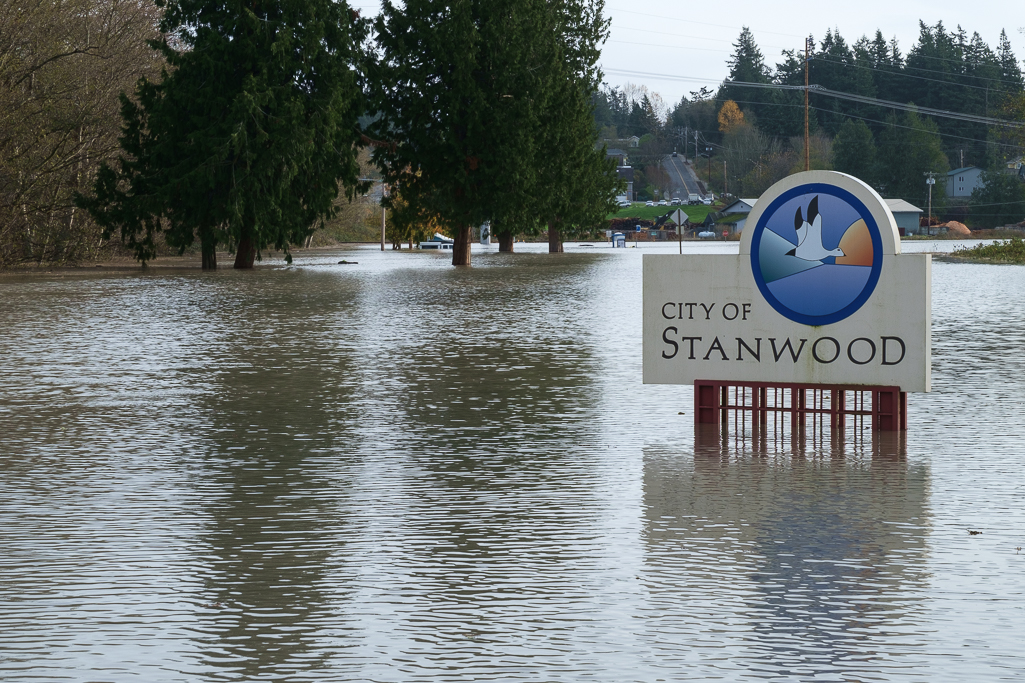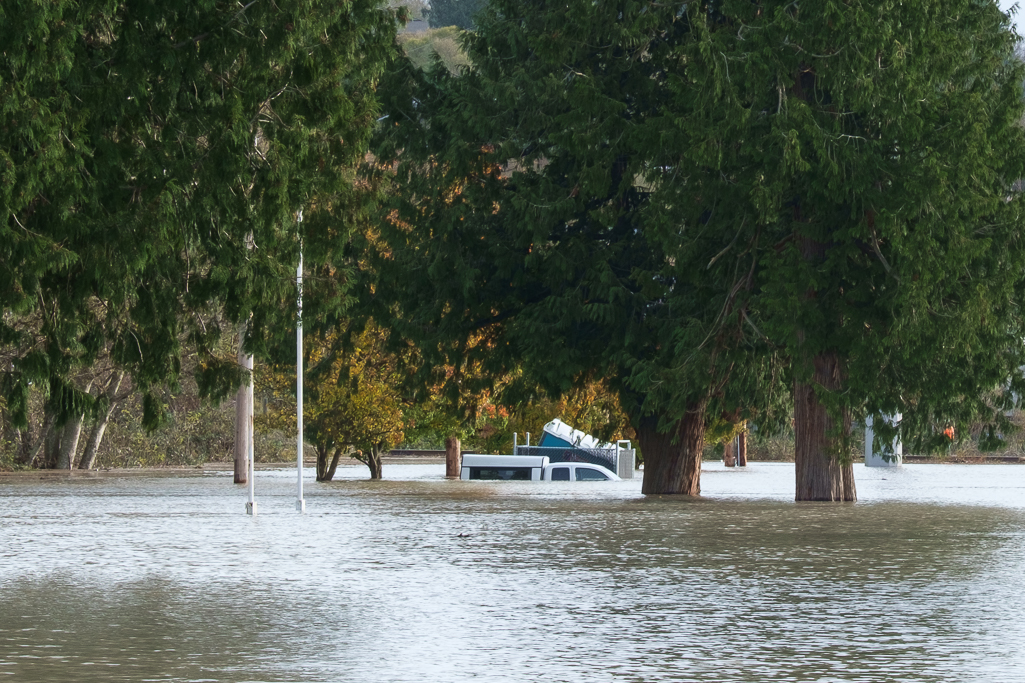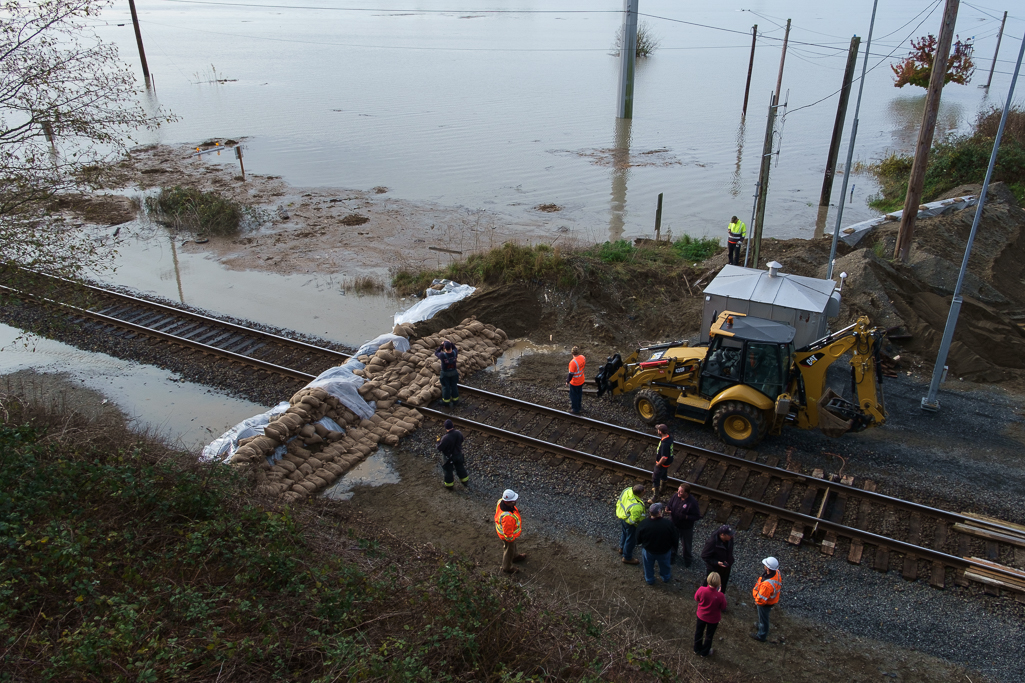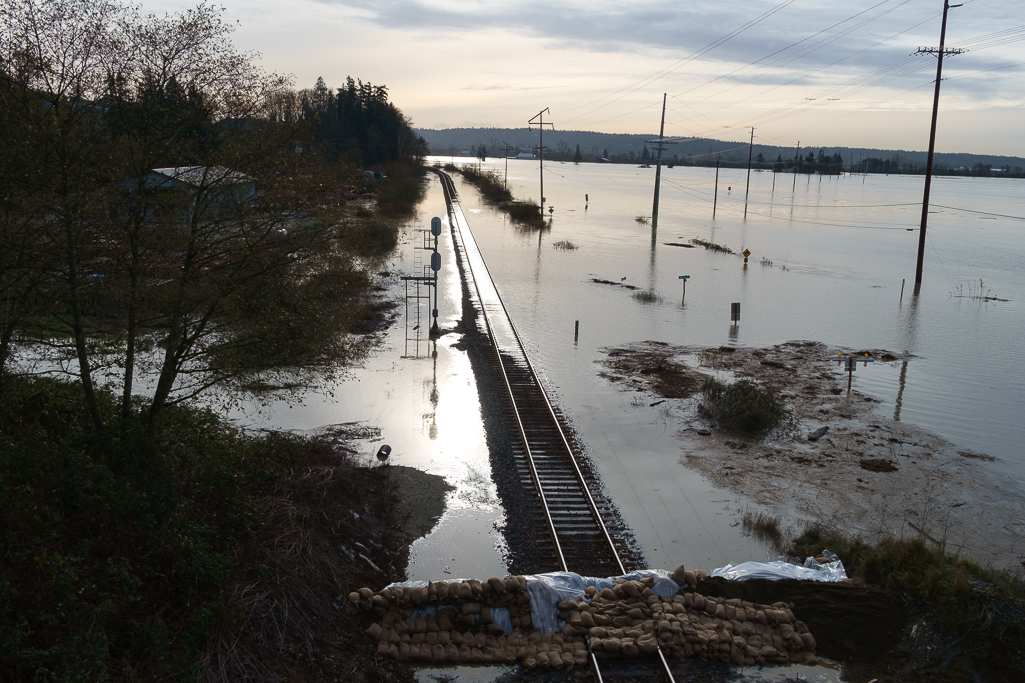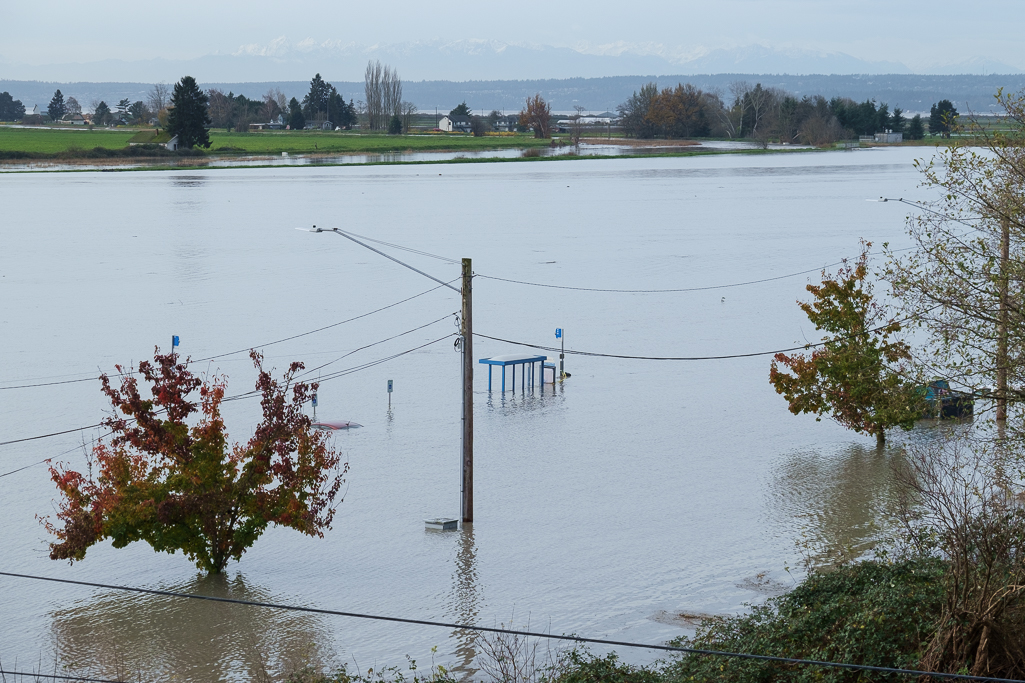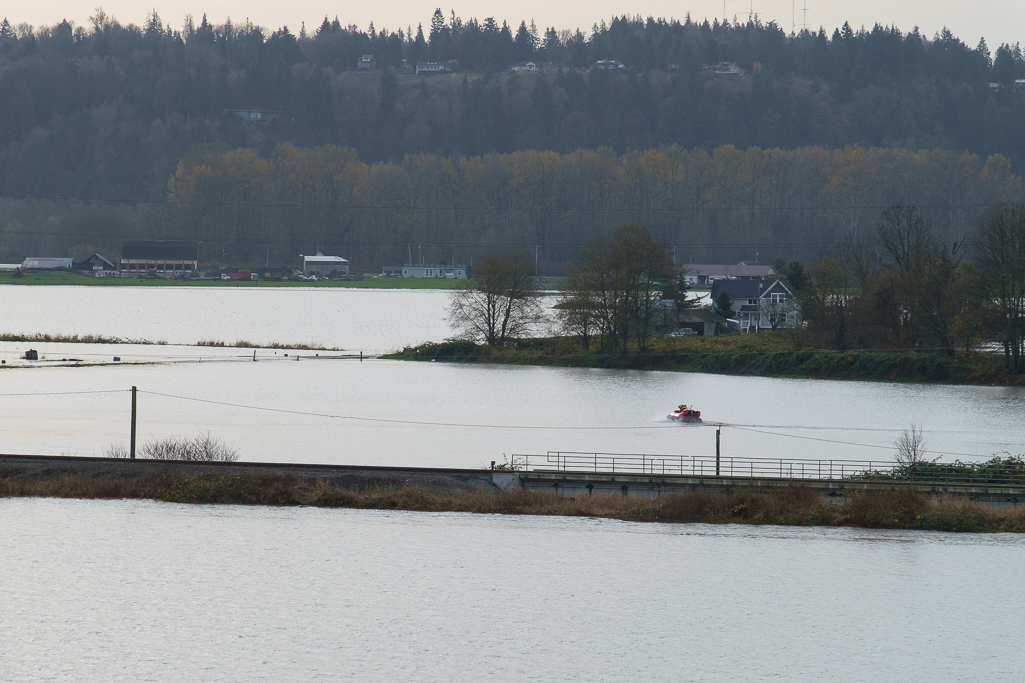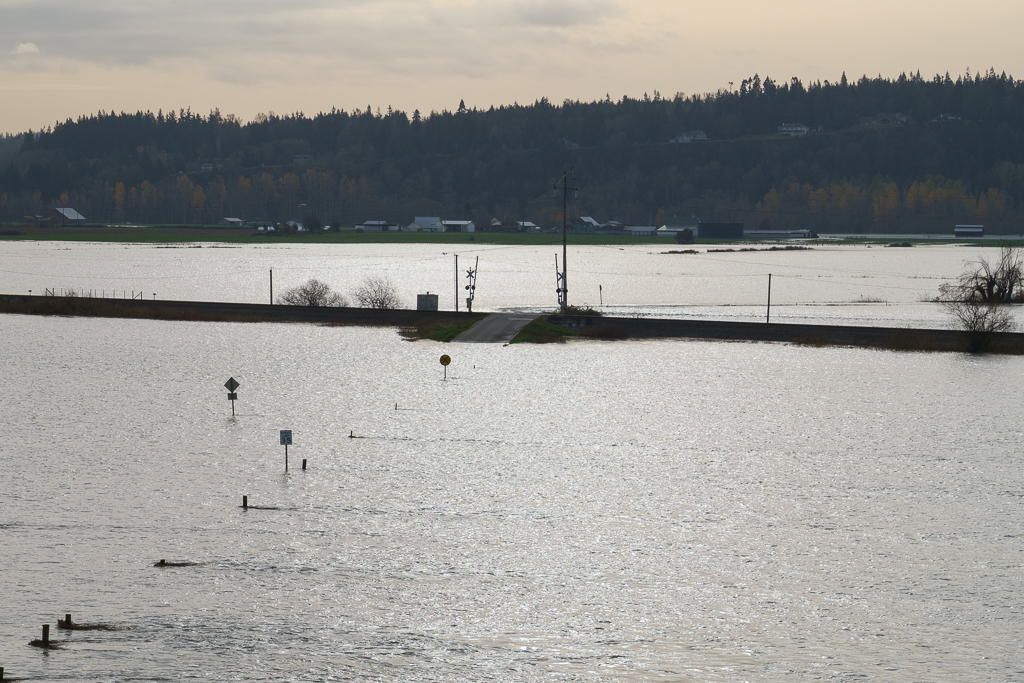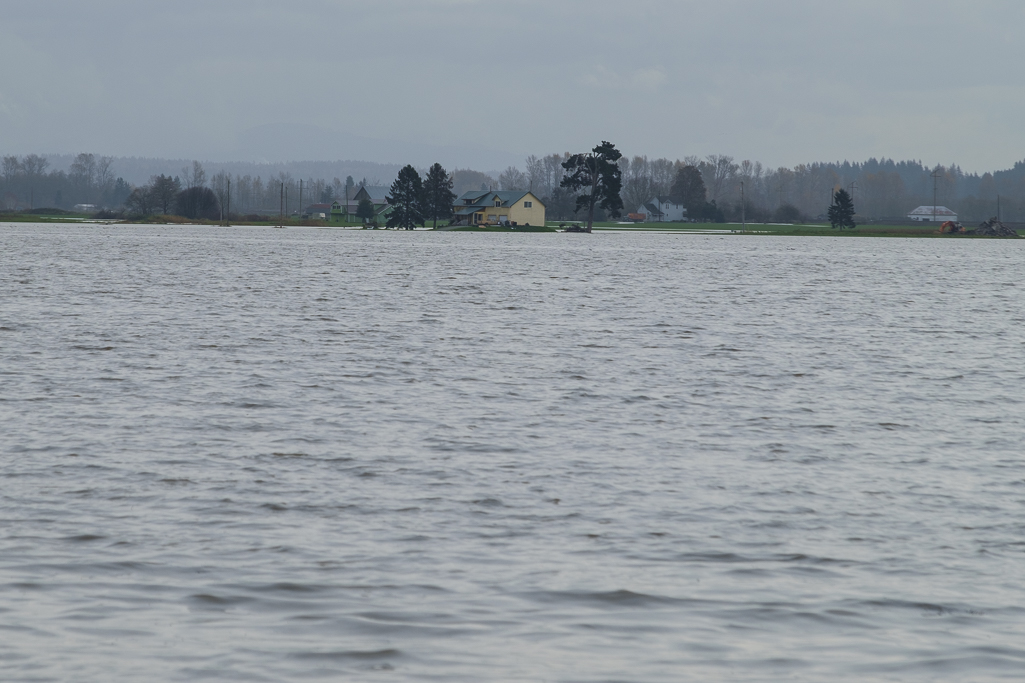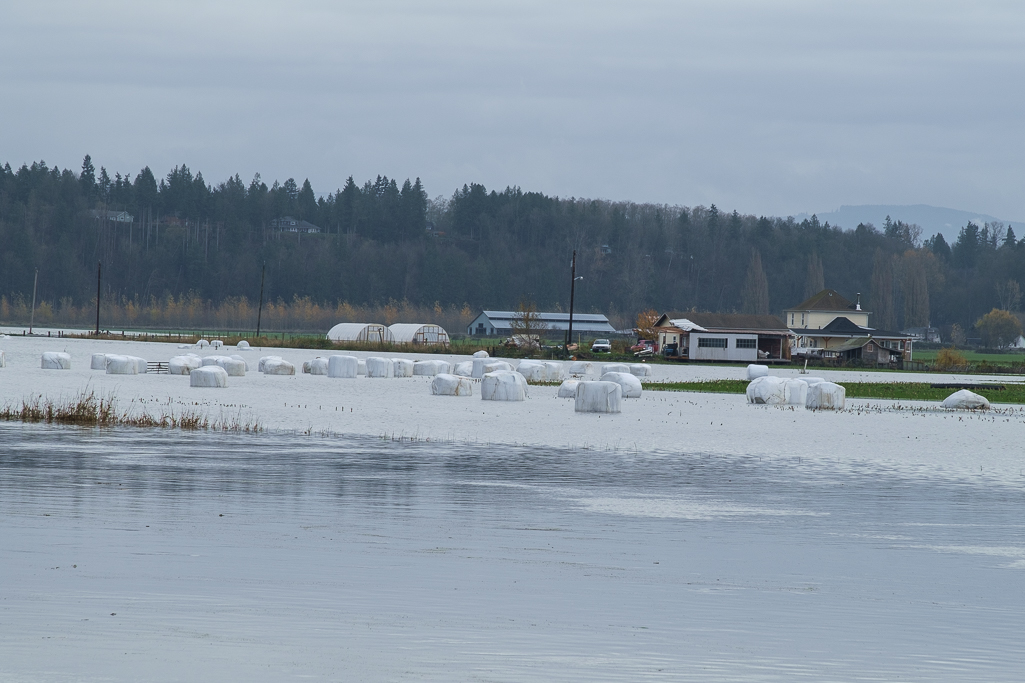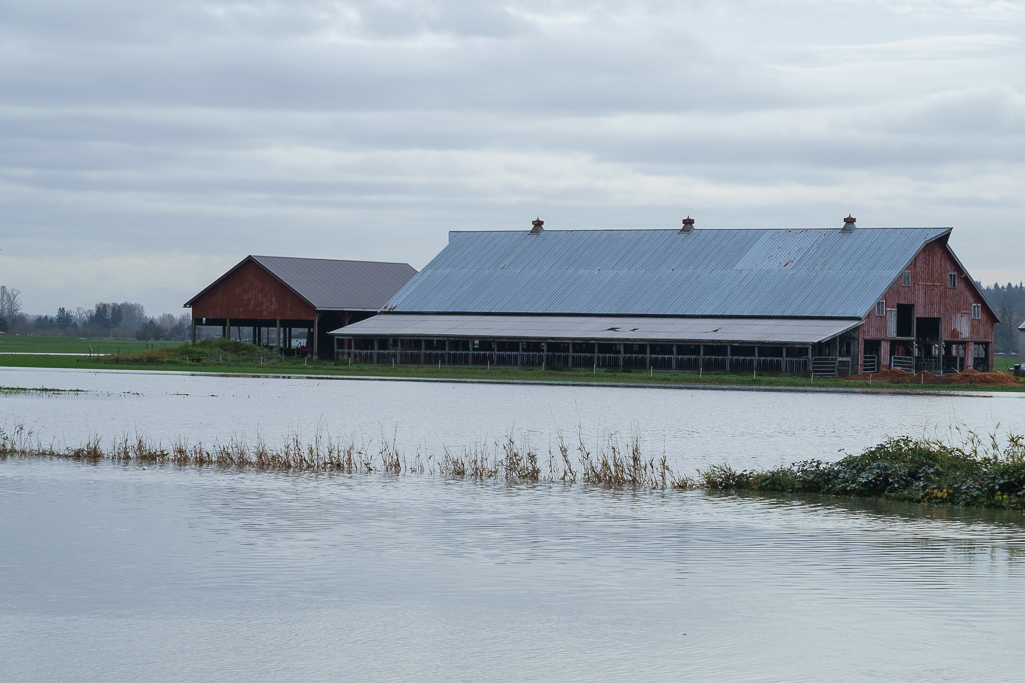Written and Photographed by Julie Morse, Regional Ecologist
I pulled up to the city park in Arlington on Tuesday about lunchtime to check and see what the river was doing. Guess I wasn’t the only one with that idea, it felt like pulling into a drive thru theatre. There was a line of cars – all facing the river, owners staying inside the cars, just watching and texting photos of a raging river.
It makes sense I thought, this is Western Washington after all. This is flood season. This is what we do for entertainment; we go and watch the river.
Wednesday morning after the storm had passed and the rivers had peaked I again drove down to see what the river was doing in Stanwood. Only it didn’t feel like good ol’ fashion entertainment this time. Instead there was a flurry of activity with fire trucks and rescue vehicles, and one bright orange hovercraft launching right off highway 532, going straight across the valley to rescue people stranded in isolated farmhouses.
This is not the first time the Stilly valley has flooded. In fact, it’s not even the first time this week the Stilly flooded. The Stillaguamish had two “100 year floods” this week, making this at least the 5th 100 year flood in the last ten years1. I know - either I’m really bad at math, or naming a flood after a probabilistic return interval is a really horrible way to communicate flood risk.
Our partners at the UW Climate Impacts Group released a report this week called the State of Knowledge: Climate Impacts in Puget Sound. The report synthesizes 20 years of studies on climate change, boiling it down to key points for our region. One of the key findings of the report – flood risk is increasing in Puget Sound. Not just the frequency of flooding, but the floodwaters themselves are getting higher. Substantially higher, in some places.
In preparing for releasing the report this week, we’ve started calling it the ‘triple whammy’ of increasing flood risk. Basically there are 3 big drivers of climate change that are causing increased flood risk in Puget Sound. First, you’ve got sea level rise backing up the rivers. Second, we’ve got increasing heavy rain events. Locals in Arlington told me “this isn’t our typical Arlington drizzle” and they’re exactly right. Warmer ocean temperatures and warmer air results in more moisture in the storms. And third, with warmer temperatures – more of our precipitation falls as rain not snow. Rain immediately runoffs to the nearest river causing then rapidly rising river levels.
Just to be clear, this report tells us nothing about our weather today – if for example these floods on the Stilly this week were a result of climate change. For that, we need attribution studies – a hot new topic in climate science, but not the intent of this report. Instead this report is intended to provide future estimates, and the range of natural variability we can expect, so that we can plan accordingly.
As I drove around taking photos of the Stilly flood I was amazed by people that were still home, stranded in their homes just waiting for the flood to recede. I could see dogs on the back porch of one house, desperately waiting for a tiny patch of grass so they could go take care of business. I know this certainly isn’t the first flood these folks have gone through, I know they are rich with stories of past floods. And I know they are certainly hardy folks. But I worry the past gives us a false sense of security about the future.
I hope this report helps illustrate clear differences, and helps us understand how our river hydrology is completely changing. I hope it helps us make smart choices. I know it’s easy to get completely overwhelmed and feel hopeless in the face of climate change. But climate change is not hopeless, if you can see it coming.
1Based on a flood return interval calculated through 1998 and reported in Snohomish County’s 2004 flood hazard plan.Wednesdays peak flow was the 5th highest ever recorded at the Arlington gage, and technically a 500 year flood event.






